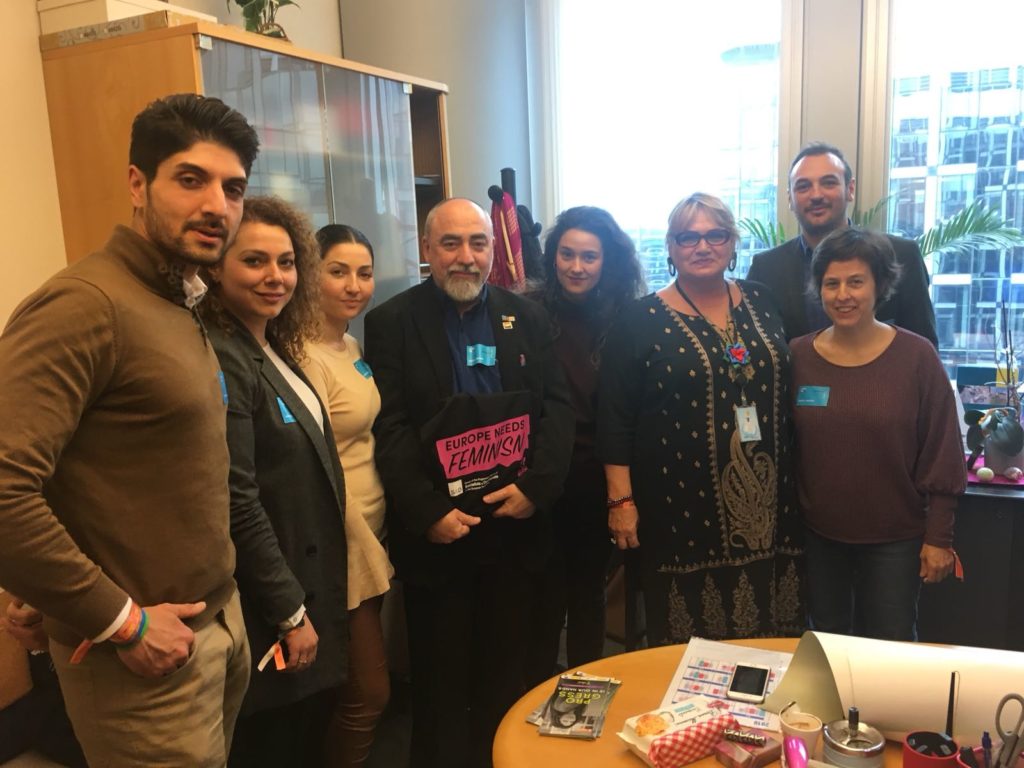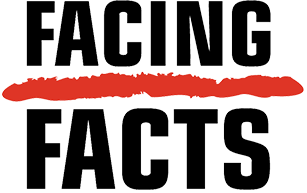Intersectionality: a necessary approach in the fight against antigypsyism
The intersectional approach is a perspective on discrimination that already has a long history. From its roots in the activism of the Black women of the Combahee River Collective[1] in the 1970s, through the first use of the term in the legal field by the Black lawyer Kimberlé Crenshaw, to the developments of this approach by Patricia Hill Collins and other researchers and activists, intersectionality has become a crucial tool for understanding the complex ways of discrimination that affect people’s lives, and addressing it for instance through adequate reparation measures for victims. This blog post explores the importance of intersectionality in addressing discrimination against Roma communities, particularly Roma women, and highlights the intersectional approach of Fundación Secretariado Gitano (FSG) in its work.
Understanding intersectionality
We can define intersectional discrimination as a specific type of discrimination, in which different types of discrimination intersect and interact (the intersection of gender and ethnic discrimination, for example). It is not a matter of adding discriminations, but of understanding how the intersection of these discriminations is something specific that requires a particular approach that recognizes these various factors.
The feminist perspective and the perspective of racialized people are at the origin of this approach, but it extends to various marginalised identities and experiences.
Roma People, like any other ethnic group in the world, are affected by this same complexity. Contrary to the stereotypical image of the Roma People that is often disseminated in the media and in various cultural environments (cinema, literature, etc.), as a closed, resistant to change, and homogeneous people, the Roma community is a rich and complex, dynamic, and very diverse people. The Roma community is also affected by various systems of oppression, including patriarchy. Furthermore, sometimes, when the disadvantaged situation experienced by Roma women is analysed, attempts are made to explain it as if it were caused by the Roma culture itself; it is considered that this disadvantage is something characteristic of Roma women “because of their culture.”
This is a serious mistake: Roma culture is not more sexist than other cultures, or than society in general; sexism affects it, in the same way it affects the rest of the cultures. For this reason, we cannot look the other way and think that they are problems that “they must solve internally.”
An intersectional approach must be incorporated into all measures and in all areas of equality so that they reach Roma women and girls, and Roma women themselves must be consulted when developing these policies.
Intersectionality in the Fight Against Antigypsyism
In the case of Roma women, intersectionality helps explain, how they can experience both antigypsyism and sexism simultaneously. For example, in many of the cases handled by the Fundación Secretariado Gitano[2], we observe that certain discriminations are only suffered by Roma women (not by Roma men, and not by non-Roma women either). A classic example is the excessive surveillance of Roma women by security guards in supermarkets and shopping centres, or the horrific practice of forced sterilisations that thousands of Roma women have suffered in countries such as Slovakia[3], the Czech Republic[4] or Sweden[5] throughout the 20th century.

Photo: Fundación Secretariado Gitano
In recent decades, various Roma women[6], intellectuals and activists, have written important studies on the importance of the intersectional approach for equality policies and for the defence of the rights of the Roma People. In the Spanish case, Fundación Secretariado Gitano (FSG) published a Guide on intersectional discrimination[7] in 2019, focused on the case of Roma women, a text in which the women of the FSG Roma Women Group participated.
Roma women face discrimination both within and outside their communities. They are expected to comply with certain gender roles, given that the global patriarchal system affects all peoples and human groups, and also outside their own communities there is a negative social image and a series of stereotypes about Roma women. Although it is not the only one, the interaction between gender and ethnicity constitutes the main characteristic of intersectional discrimination against Roma women. In addition, due to the lack of equal opportunities and access to education and employment under equal conditions, some Roma women find themselves in a situation of poverty. To these situations we can add, for example, the complex reality of Roma lesbians[8], or Roma women with disabilities.
Challenges and Solutions
We consider that the main obstacles to identifying this specific form of discrimination against Roma women are related to ignorance and normalisation of it, as well as the lack of training and political will to identify and eradicate this kind of discrimination. In the same way, the internalisation of systems of oppression, such as sexism and racism, play a crucial role in the reproduction of intersectional discrimination against Roma women in society and also by State institutions.
For all these reasons, at the FSG we defend the incorporation of the intersectional approach in legislation, and also in the organisations and institutions in charge of fighting discrimination (police, prosecutors, judges, lawyers, etc.), with greater training among professionals in this field, so that it is used appropriately in investigations of anti-Roma cases and in sentencing[9]. Good news in this sense is that intersectionality is mentioned several times in the Spanish Equal Treatment and Non-Discrimination Law[10], approved in 2022, and is also beginning to be used in official documents of the European Union. For example, the EU Plan against racism mentions that:
“In addition to religion or convictions, racism can also be linked to discrimination and hatred for other reasons, such as gender, sexual orientation, age and disability, or directed against migrants. This must be taken into account through an intersectional approach.”[11]
As members of the Facing Facts Network, we especially value that this network incorporates an intersectional approach in its fight against hate crimes and hate speech.
Celia Gabarri Hernandez
Manager of the Gender Equality and Roma Women Department
Javier Sáez del Álamo
Senior expert of the Department of Equality and Fight against Discrimination
Fundación Secretariado Gitano
[1] Keeanga-Yamahtta Taylor: How We Get Free: Black Feminism and the Combahee River Collective, Haymarket, 2017.
[2] https://informesdiscriminacion.gitanos.org/informes-completos-ingles
[3] https://hudoc.echr.coe.int/eng?i=001-107364
[4] http://www.errc.org/uploads/upload_en/file/coercive-and-cruel-28-november-2016.pdf
[5] https://www.government.se/contentassets/eab06c1ac82b476586f928931cfc8238/the-dark-unknown-history—white-paper-on-abuses-and-rights-violations-against-roma-in-the-20th-century-ds-20148
[6] Angela Kóczé: Missing Intersectionality: Race/Ethnicity, Gender, and Class in Current Research and policies on Romani Women in Europe, CEU University Press, Budapest, 2009.
Angéla Kóczé, Violetta Zentai, Jelena Jovanović, Enikő Vincze: The Romani Women’s Movement Struggles and Debates in Central and Eastern Europe; Routledge, 2020.
Alexandra Oprea: Intersectionality Backlash: A Romani Feminist’s Response, ERRC, 2009.
http://www.errc.org/uploads/upload_en/file/roma-rights-2-2009-multiple-discrimination.pdf
[7] https://www.gitanos.org/upload/22/65/GUIDE_ON_INTERSECTIONAL_DISCRIMINATION_-_ROMA_WOMEN_-_FSG_33444_.pdf
[8] Vera Kurtic, Džuvljarke: Roma Lesbian Existence, ERRC, 2013. http://www.errc.org/uploads/upload_en/file/dzuvljarke-roma-lesbian-existence.pdf
[9] Cristina de la Serna and Bianca Galusca, From the multi-dimensional to the personal: approaching intersectional discrimination against Roma women, IDEES magazine, nº 50, 2020.
[10] https://www.boe.es/buscar/act.php?id=BOE-A-2022-11589
[11] https://commission.europa.eu/system/files/2020-09/a_union_of_equality_eu_action_plan_against_racism_2020_-2025_en.pdf


 Facing Facts is co-funded by the Citizens, Equality, Rights and Values Programme
Facing Facts is co-funded by the Citizens, Equality, Rights and Values Programme
Leave a Reply